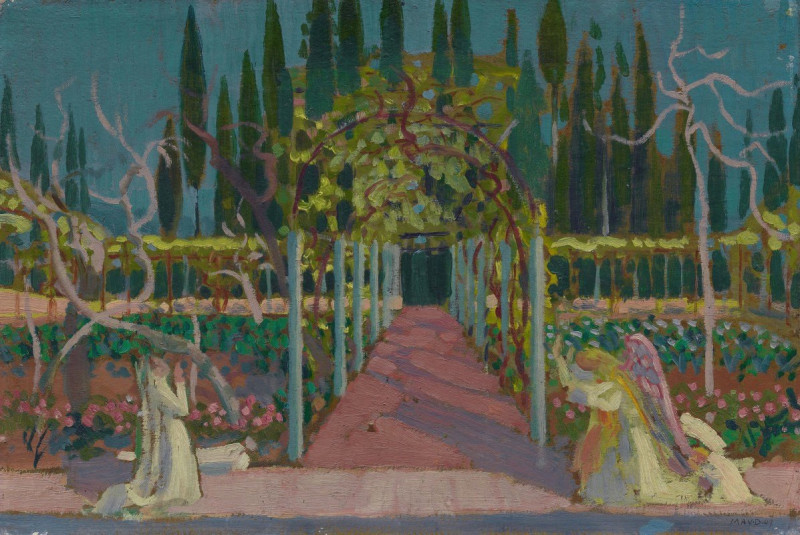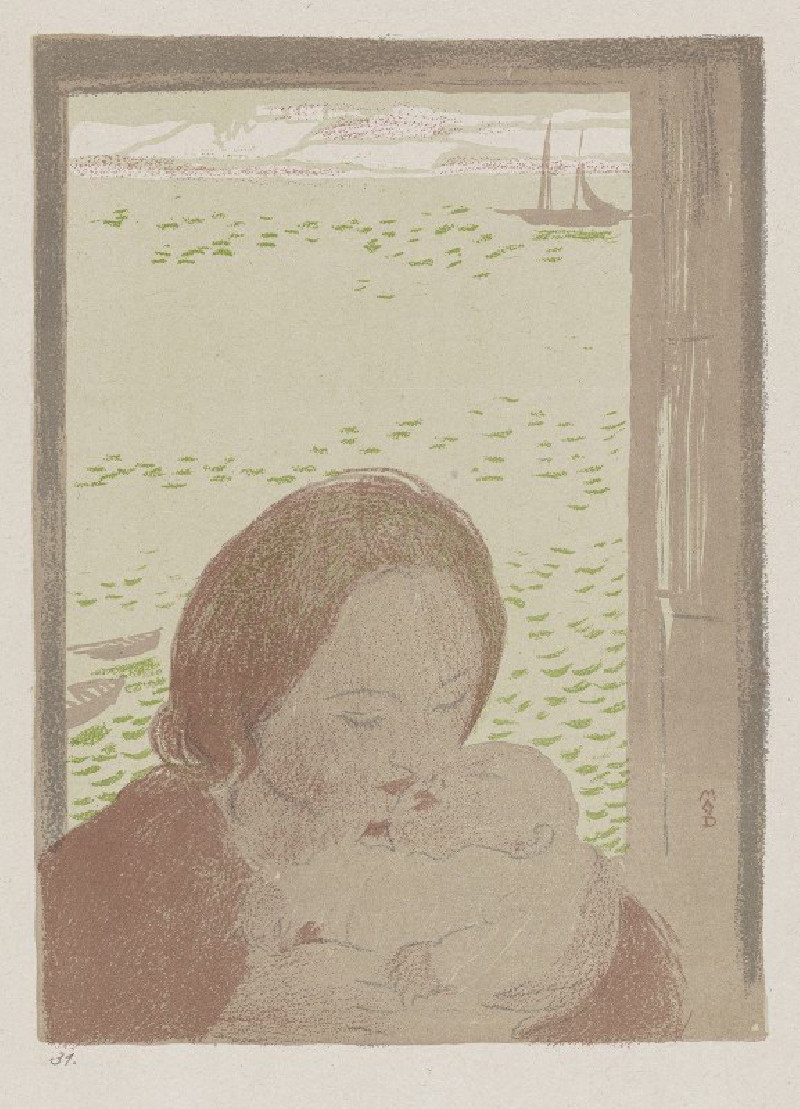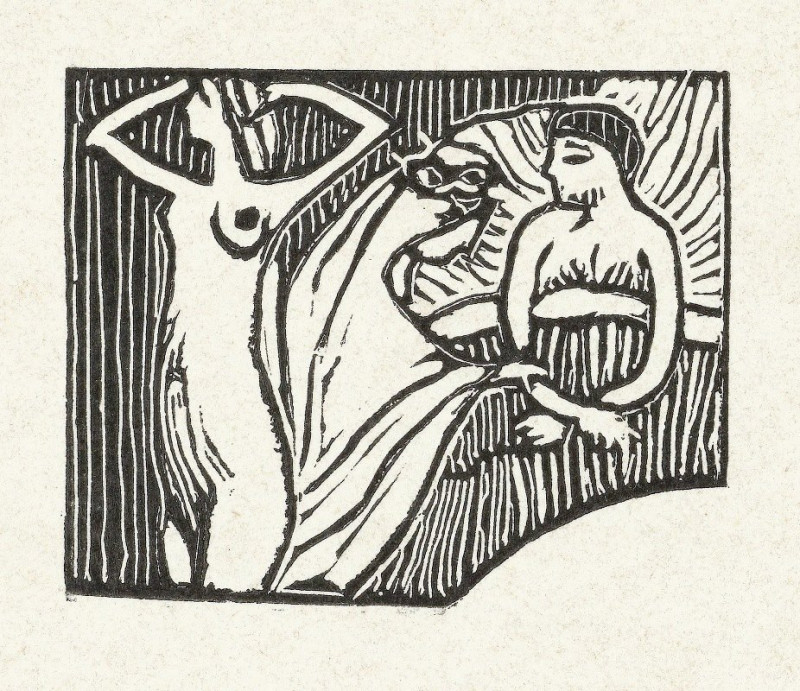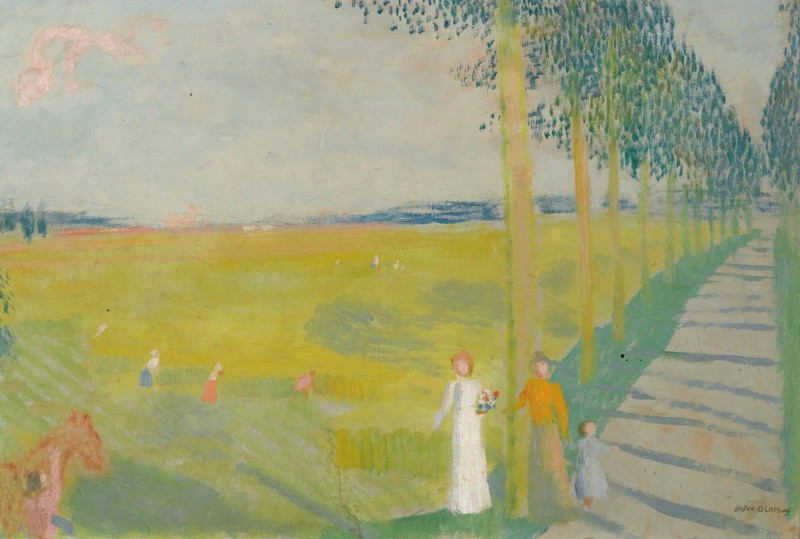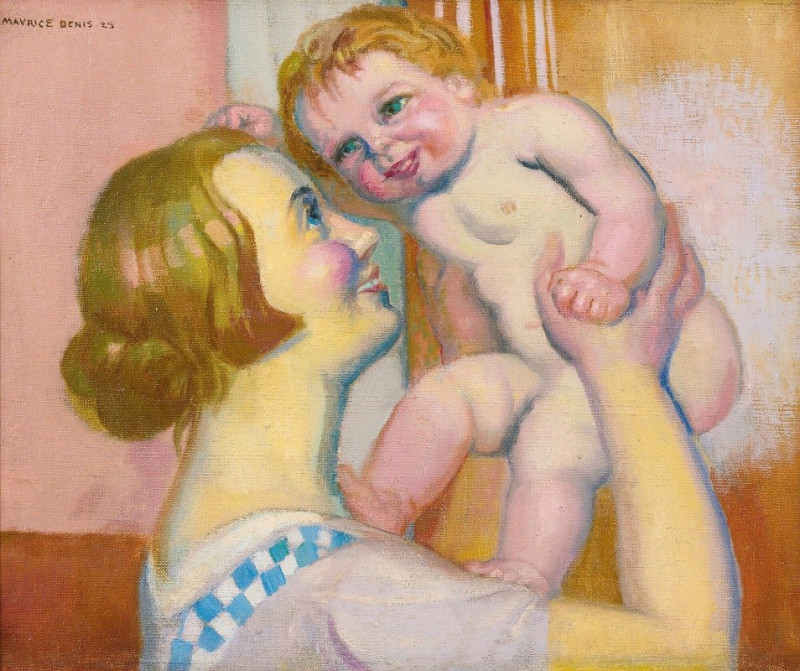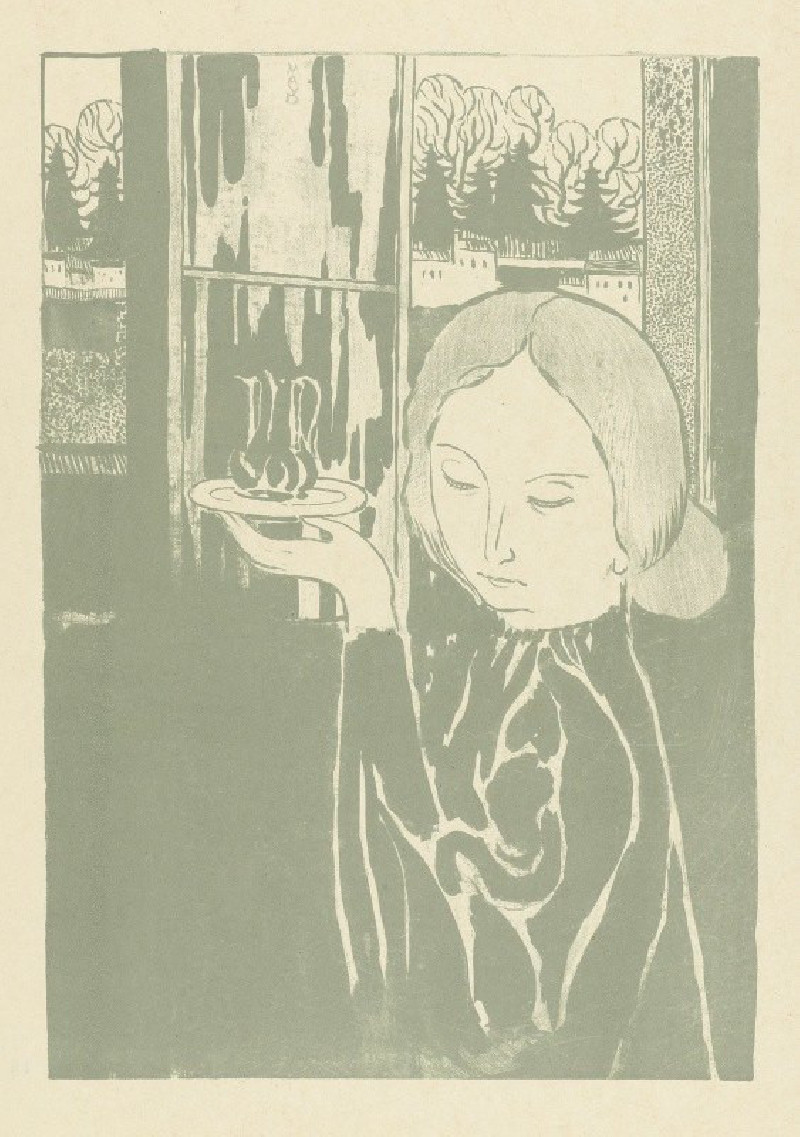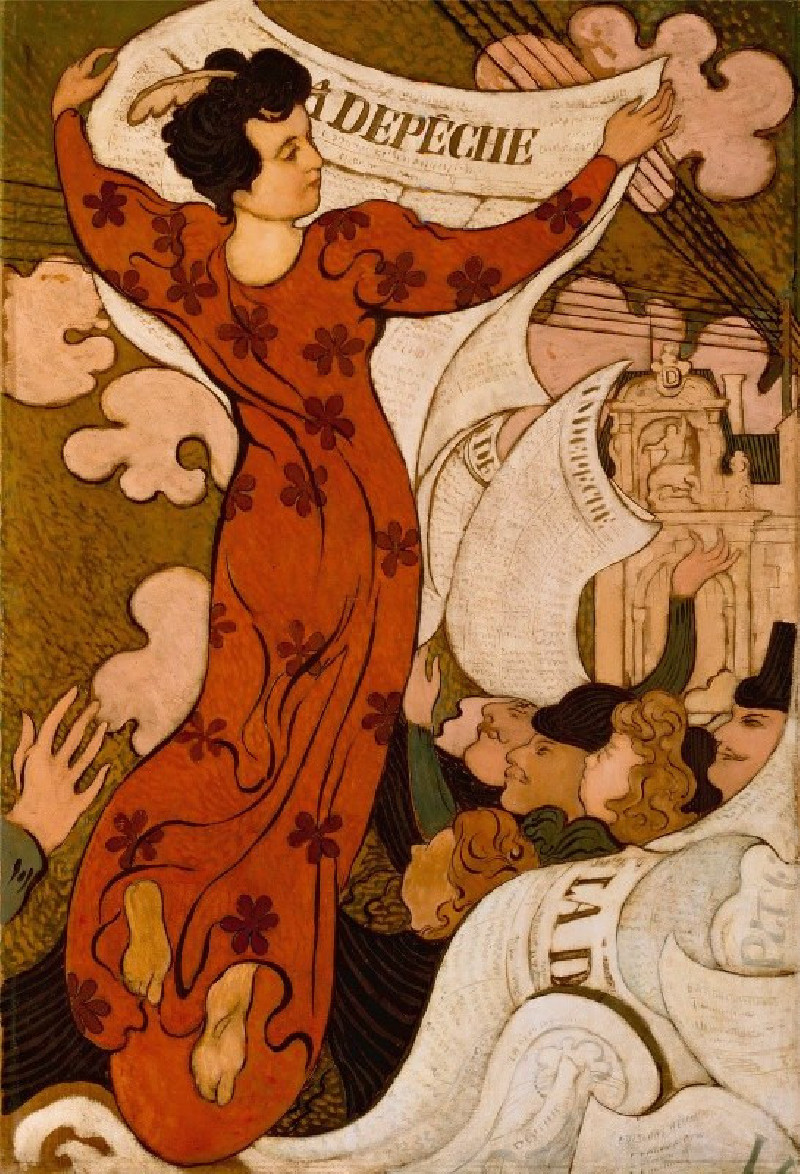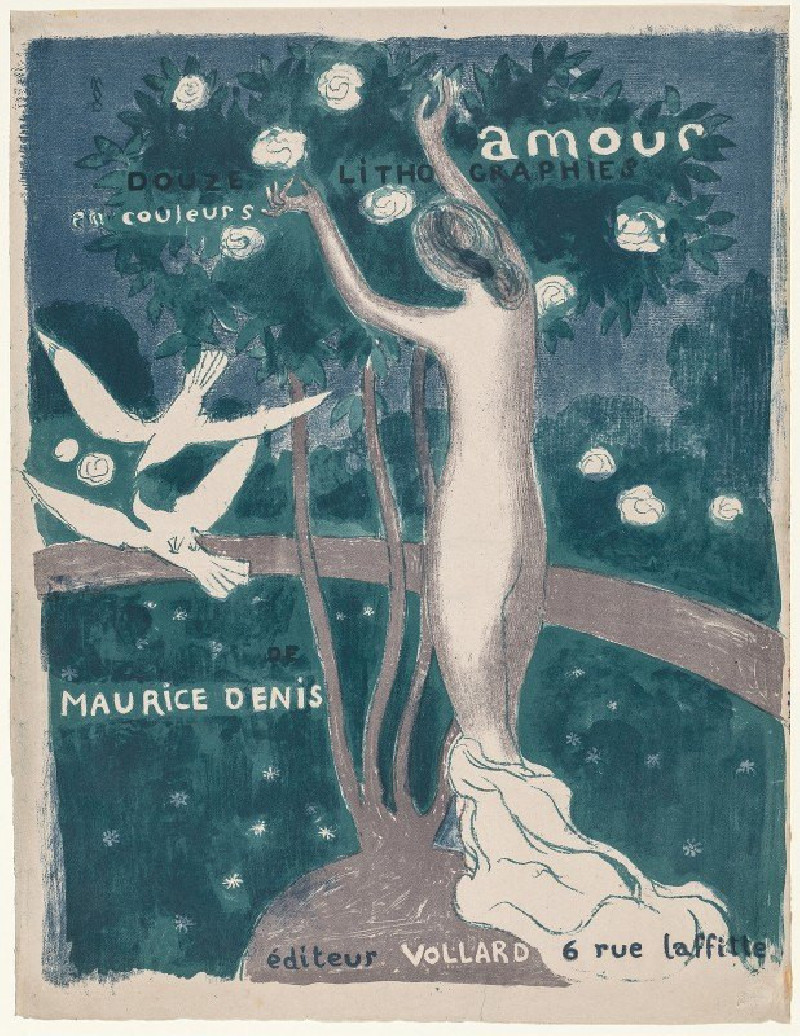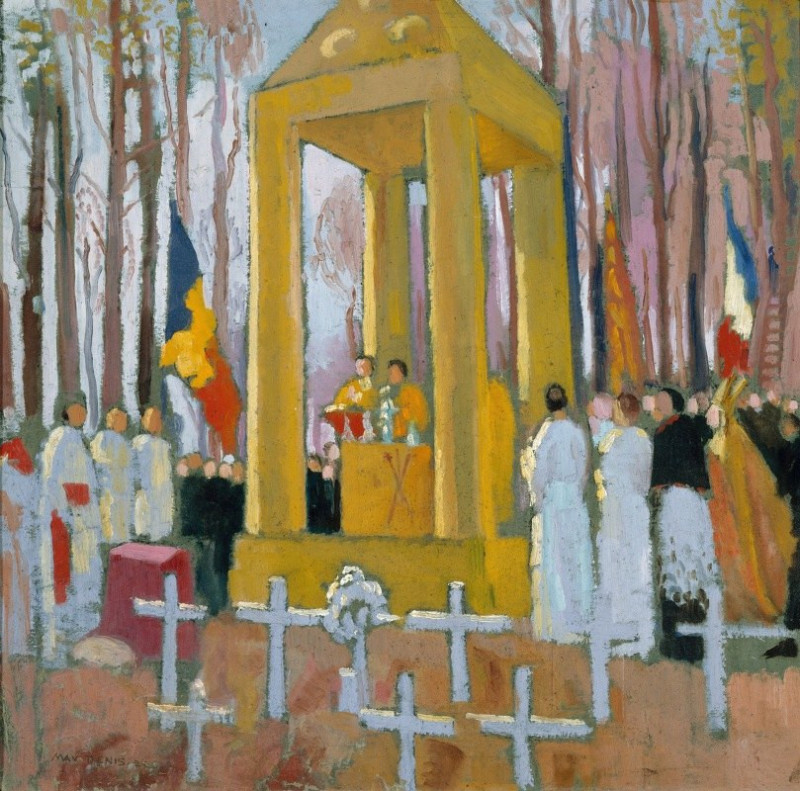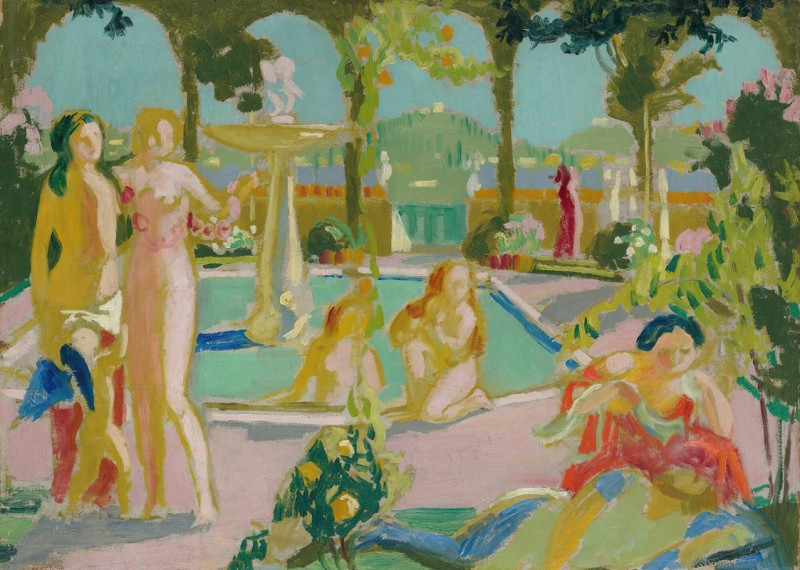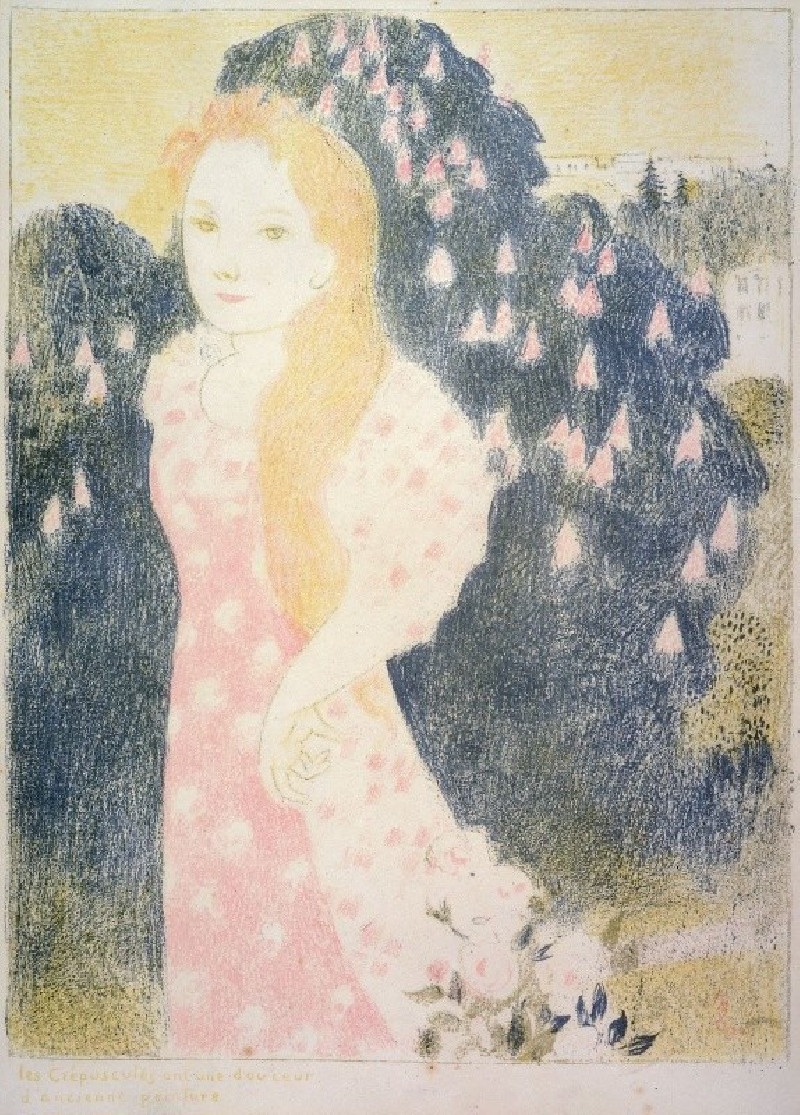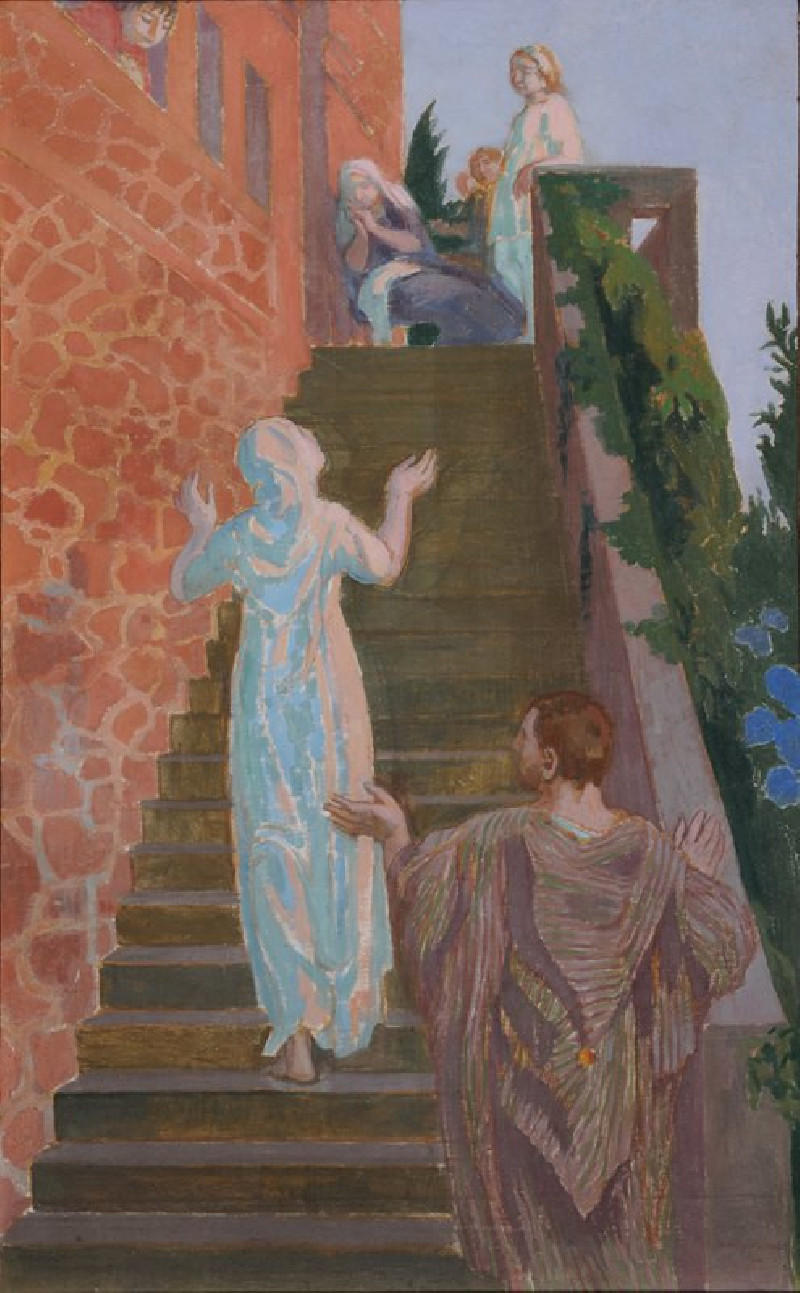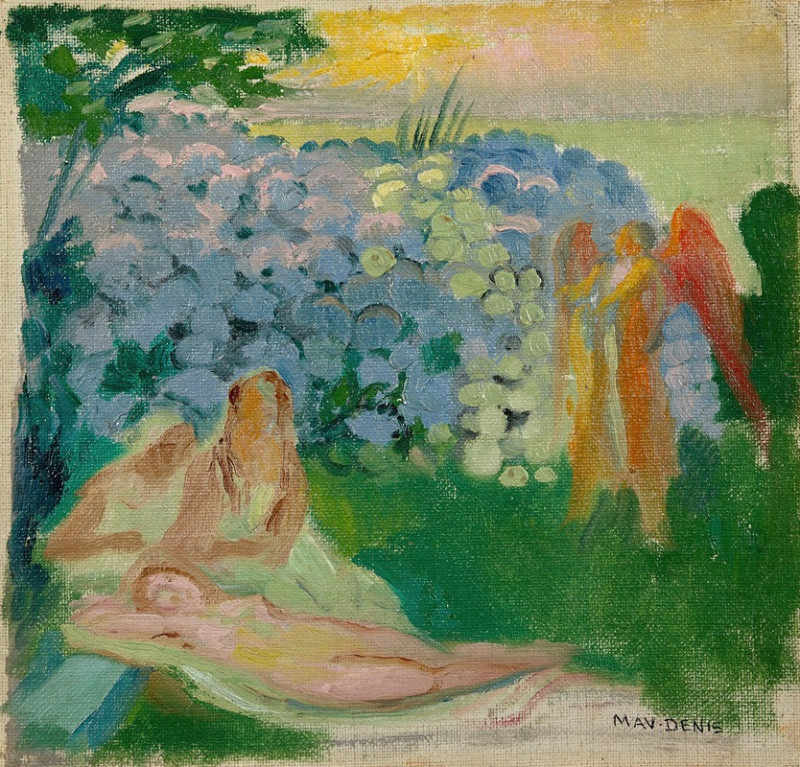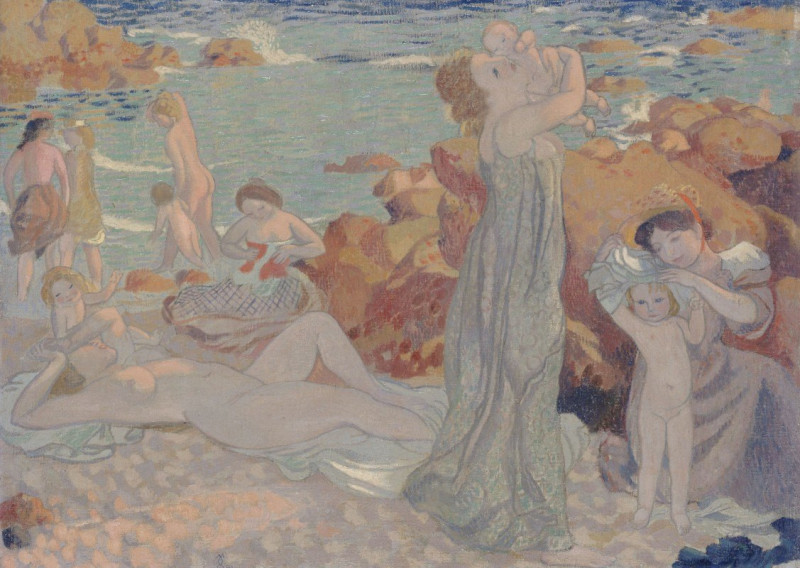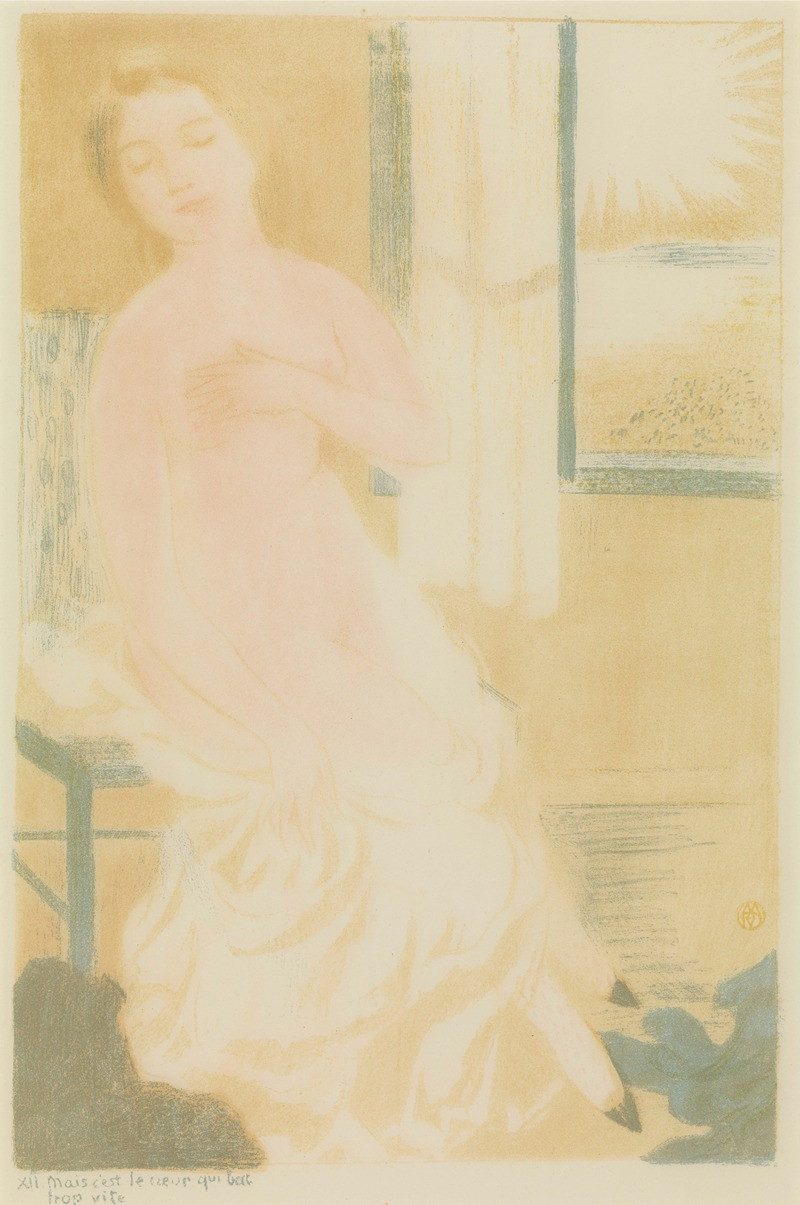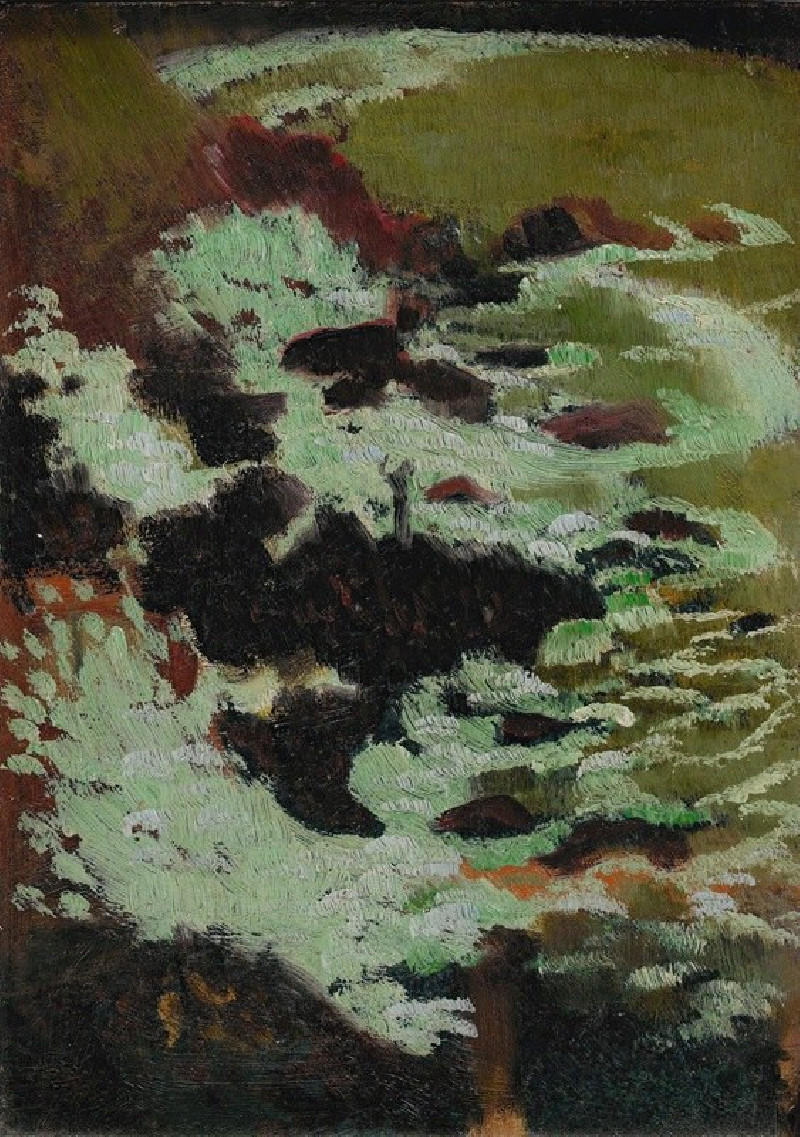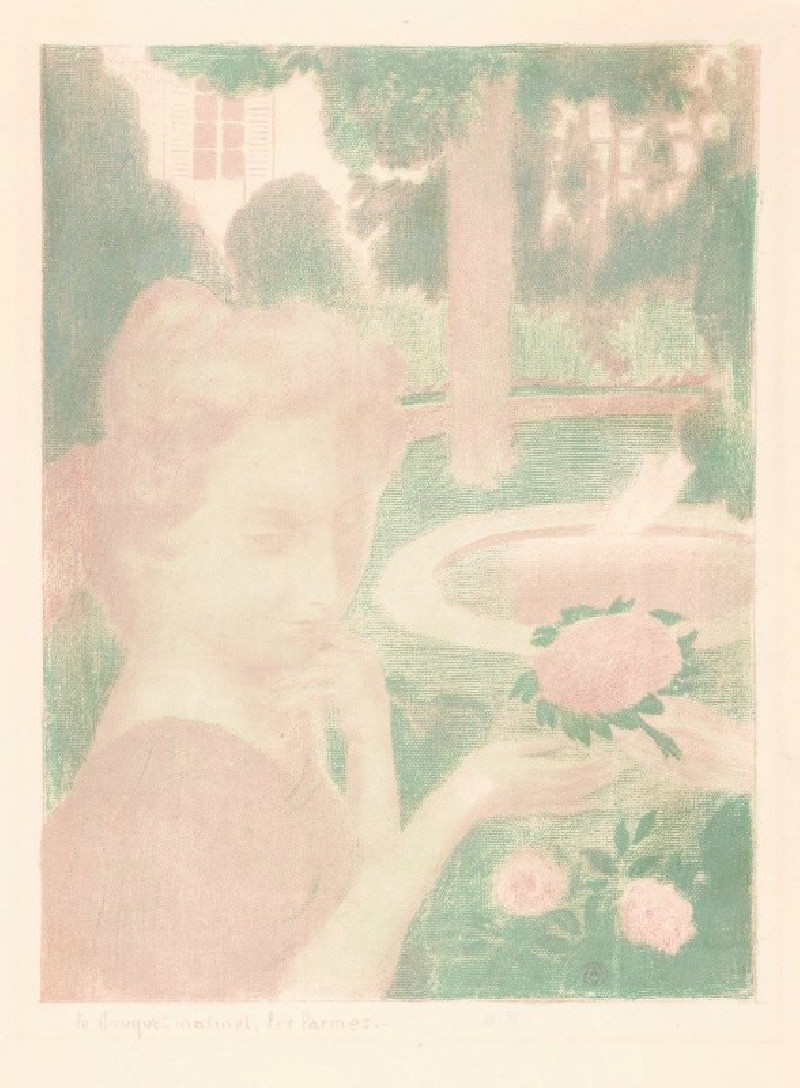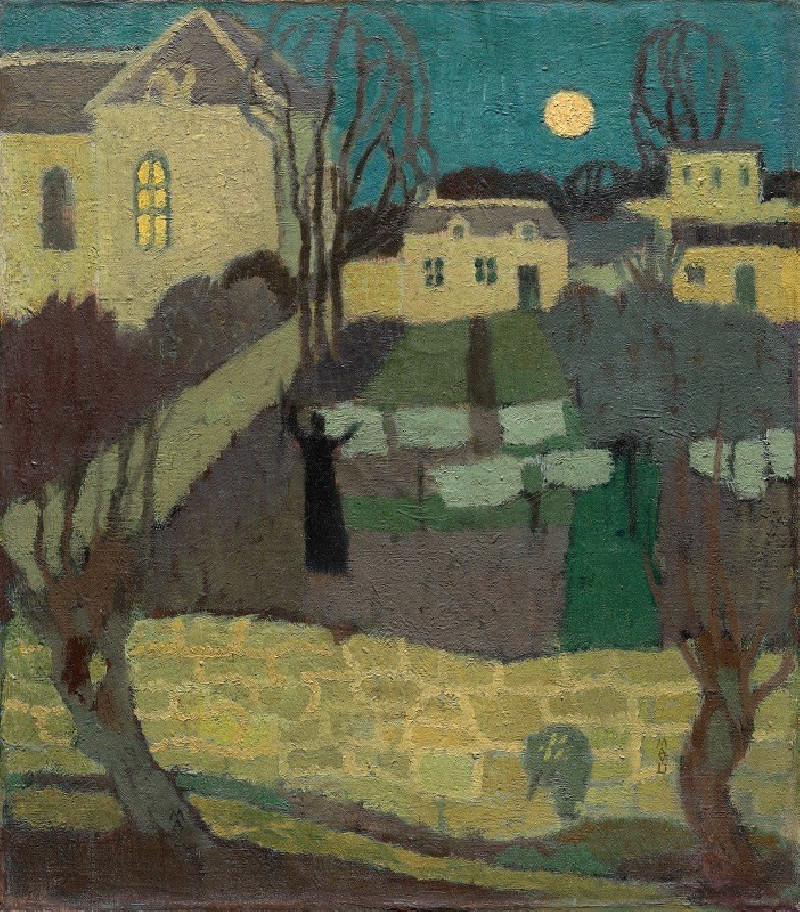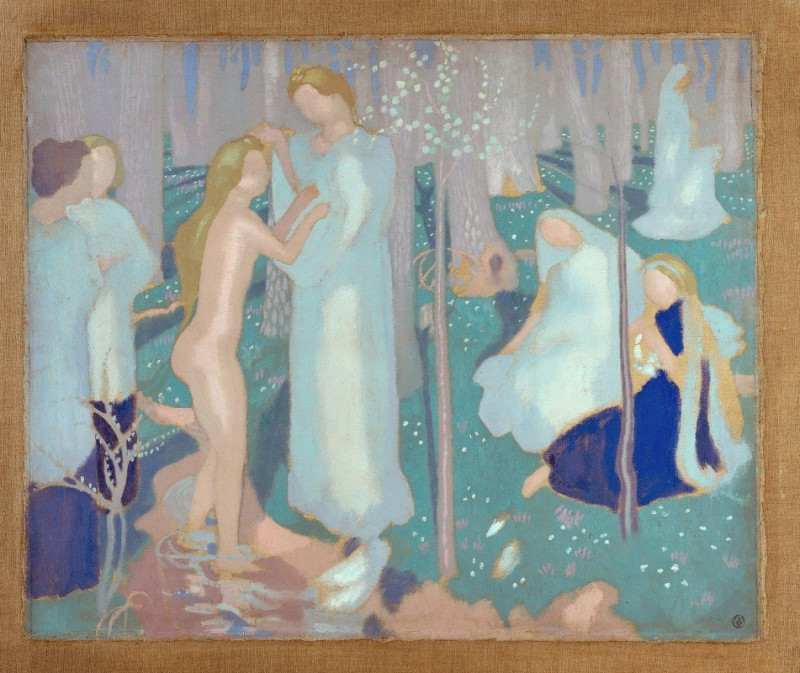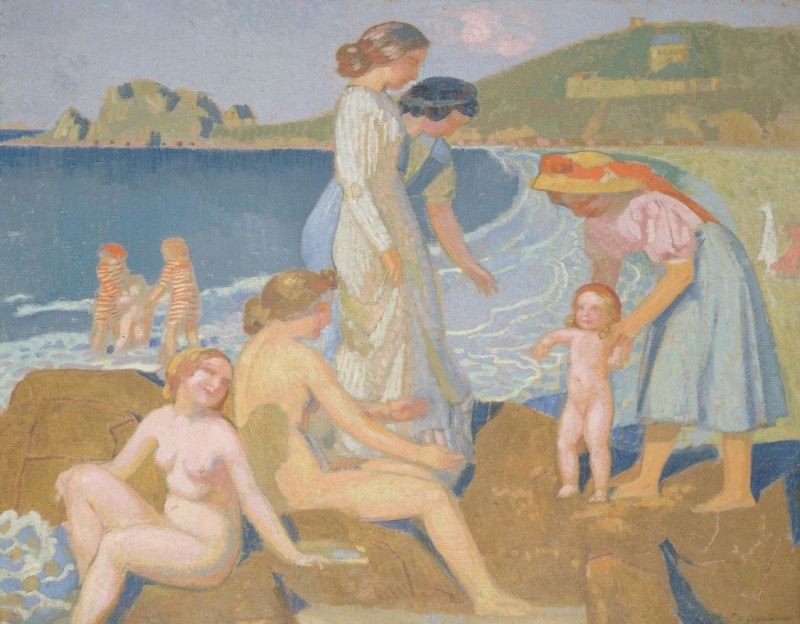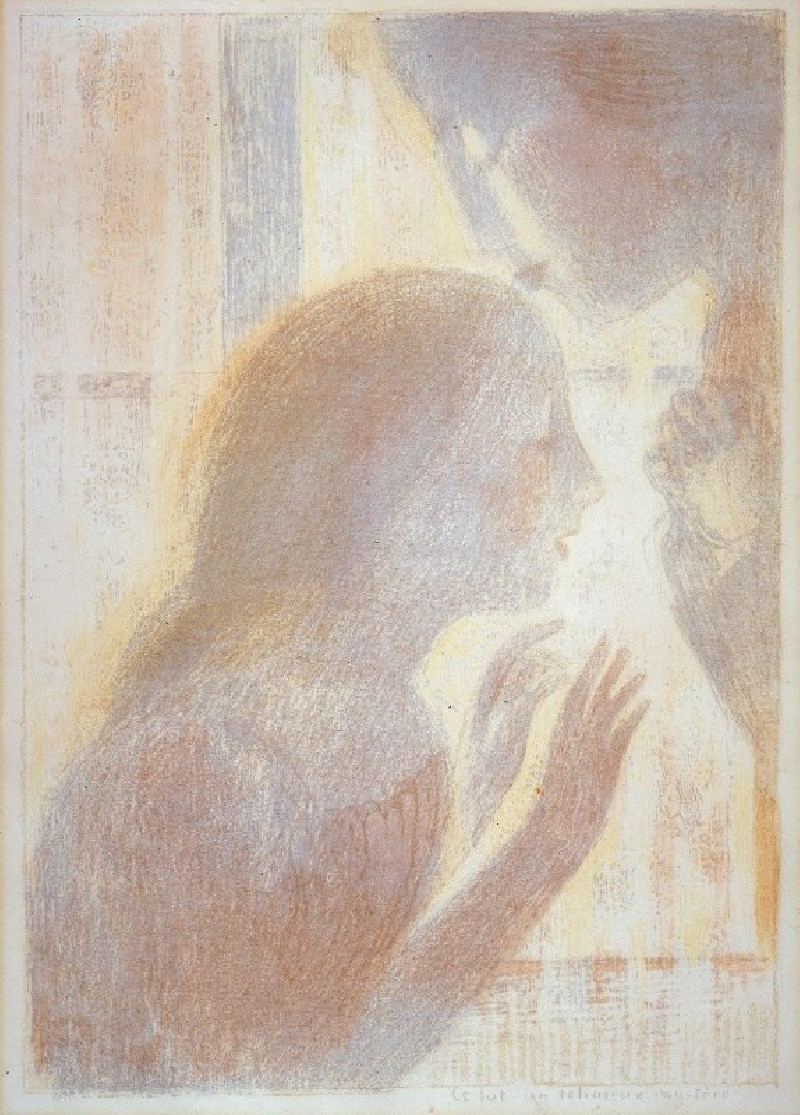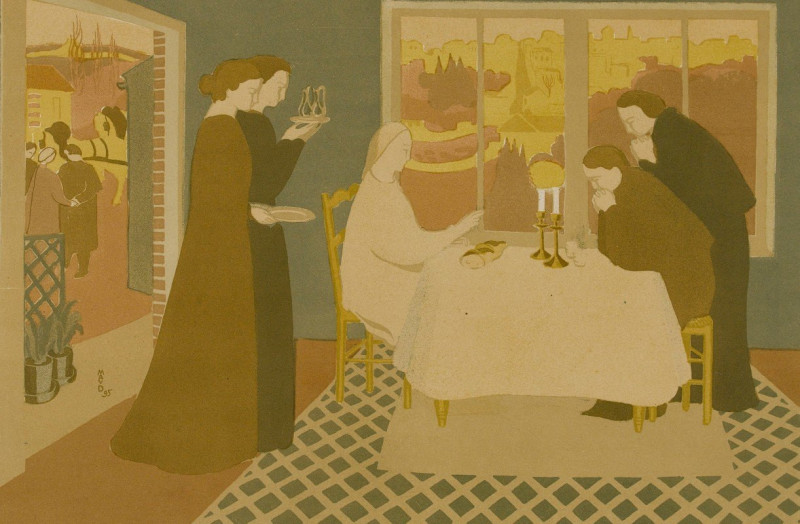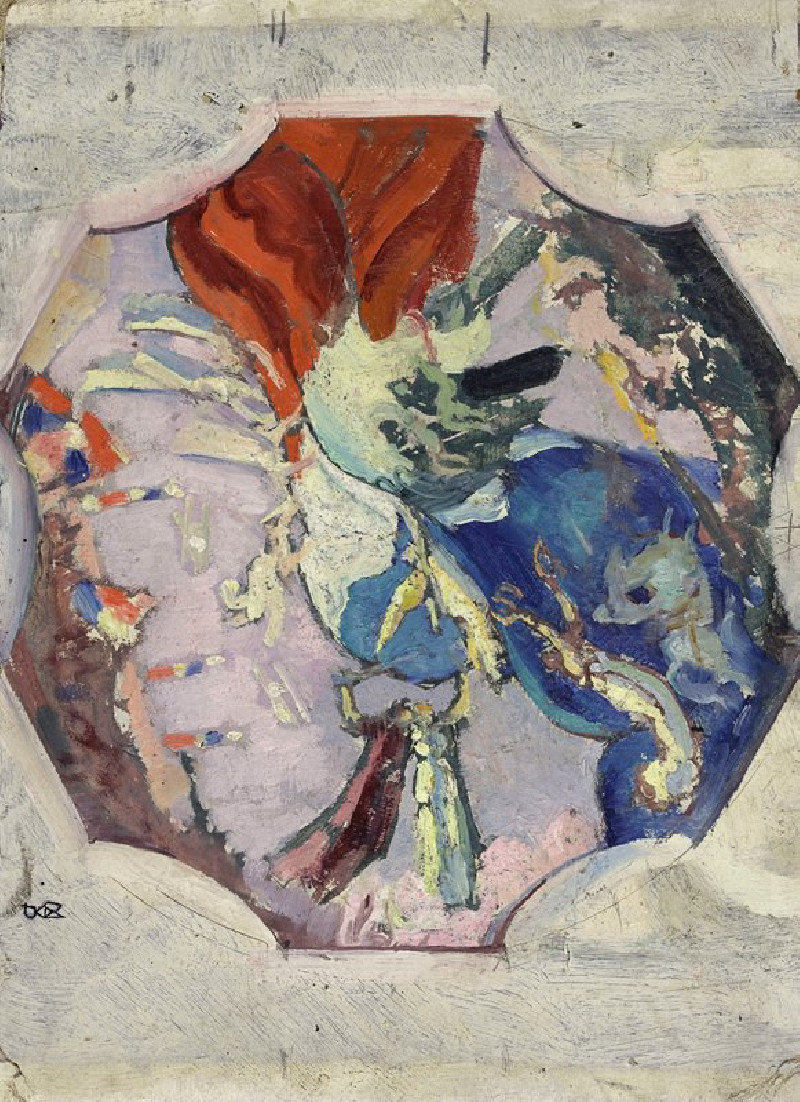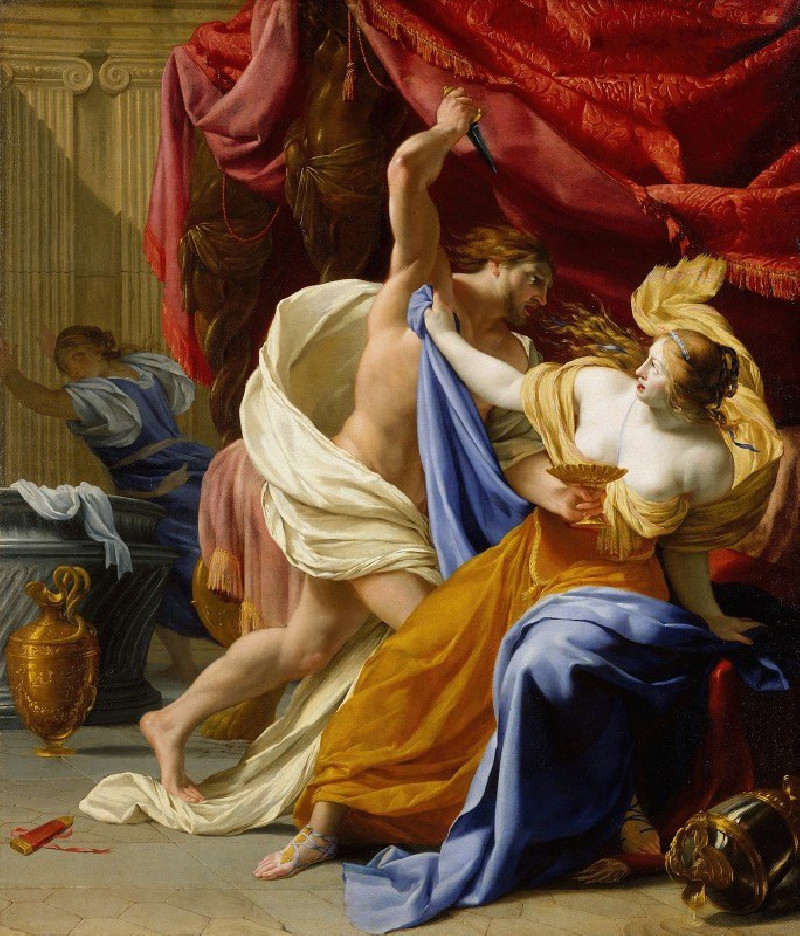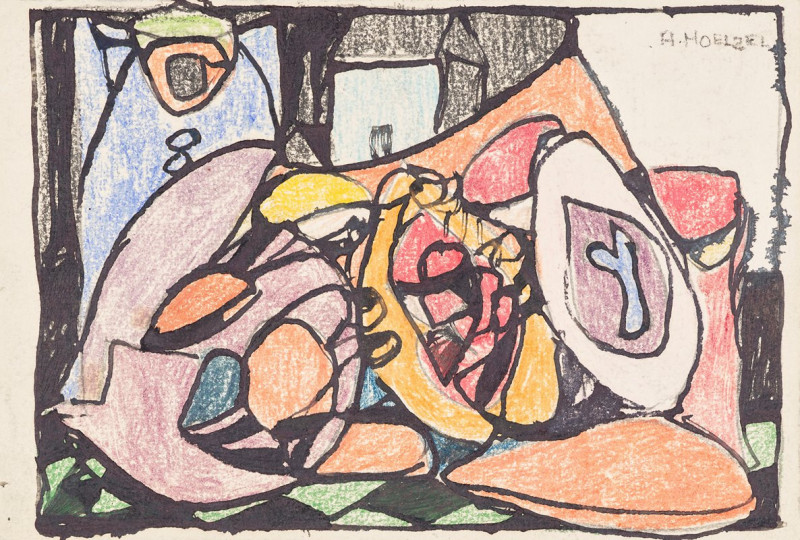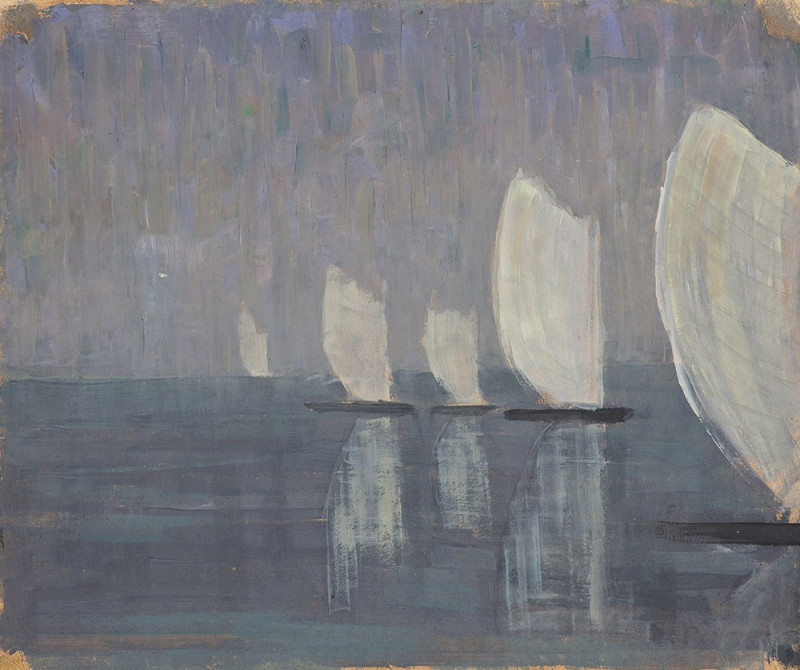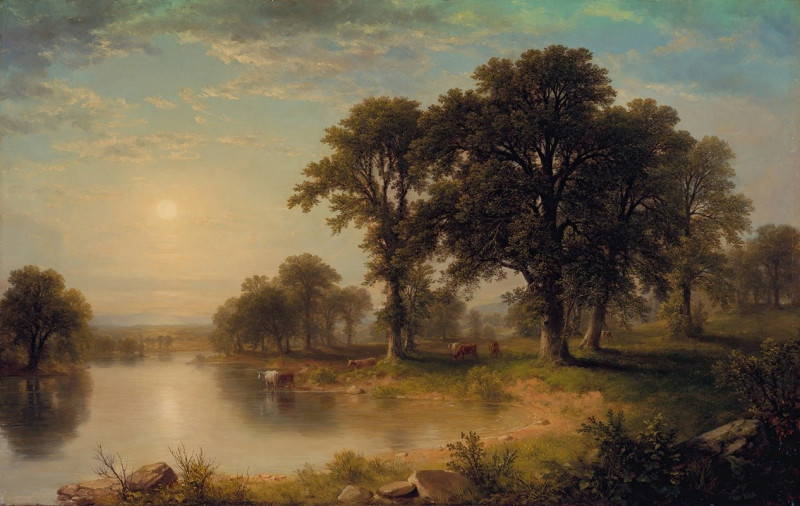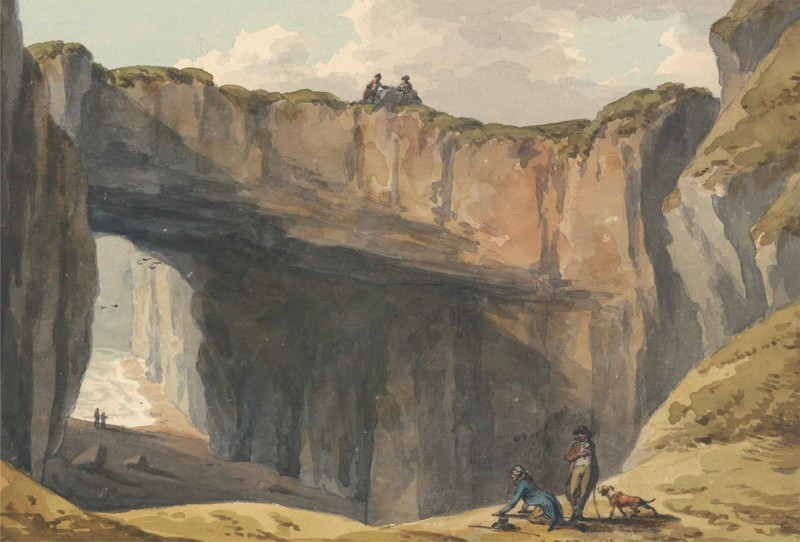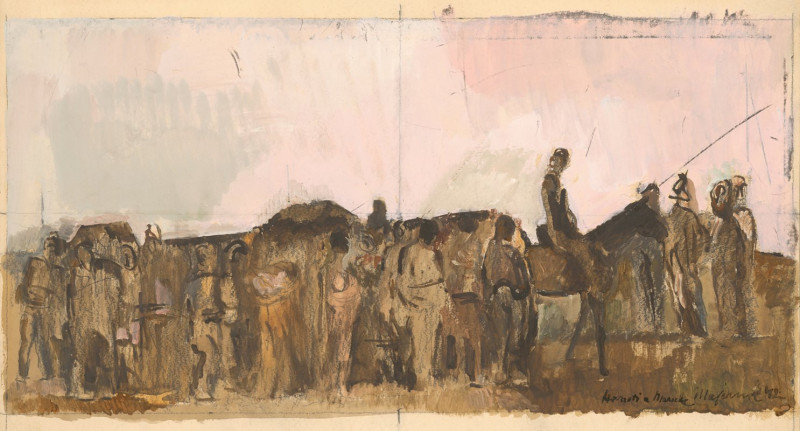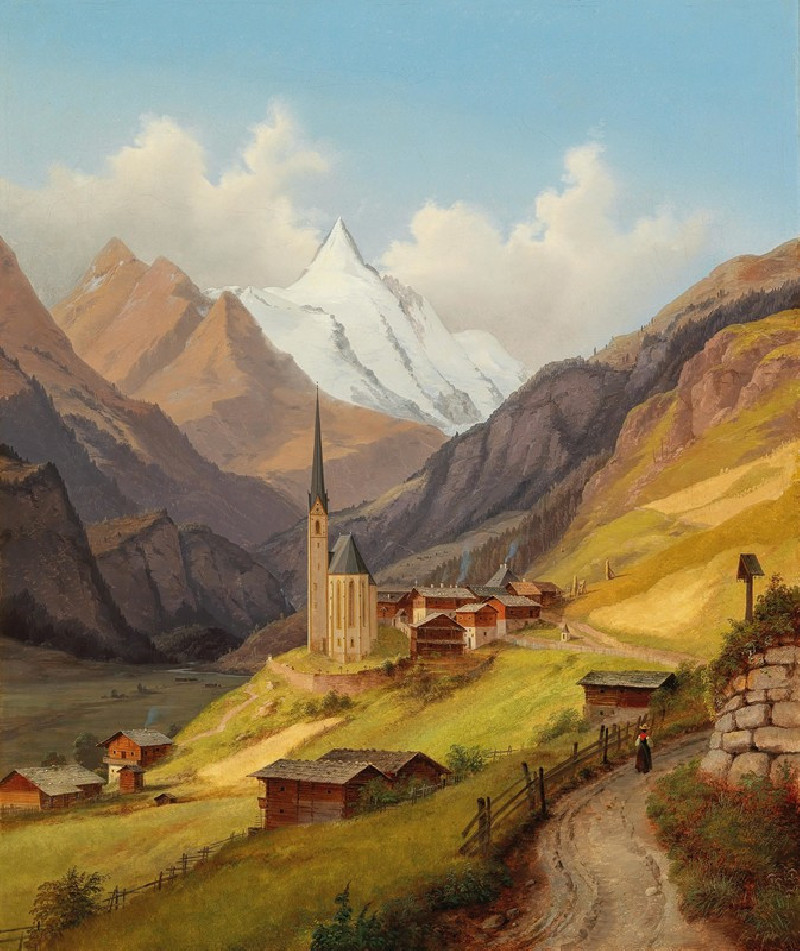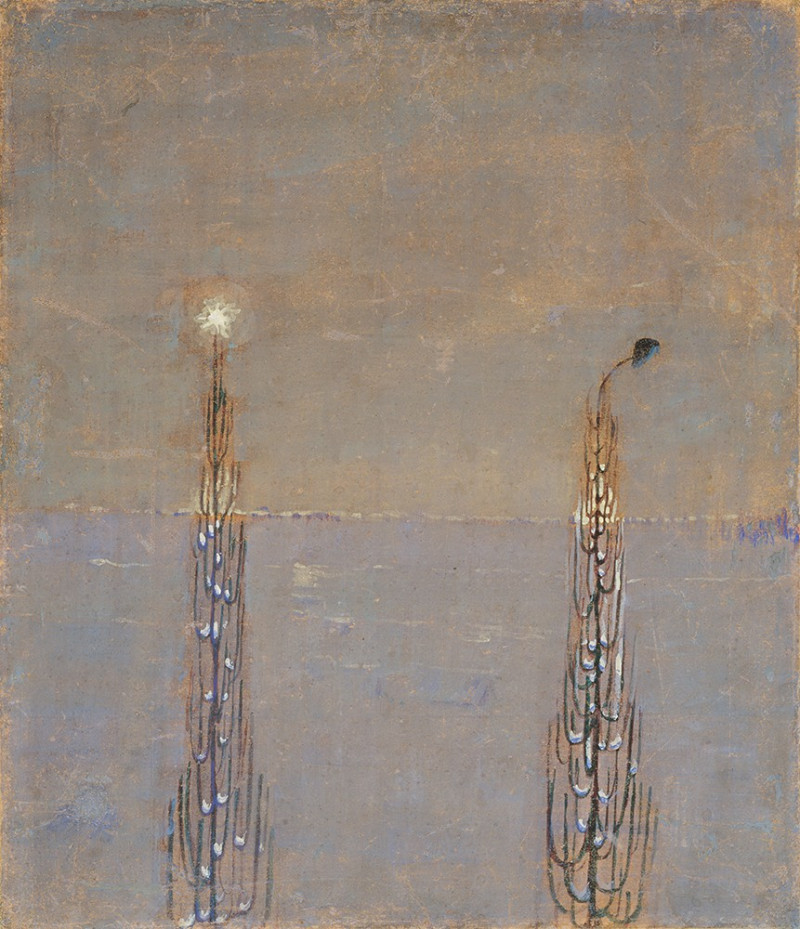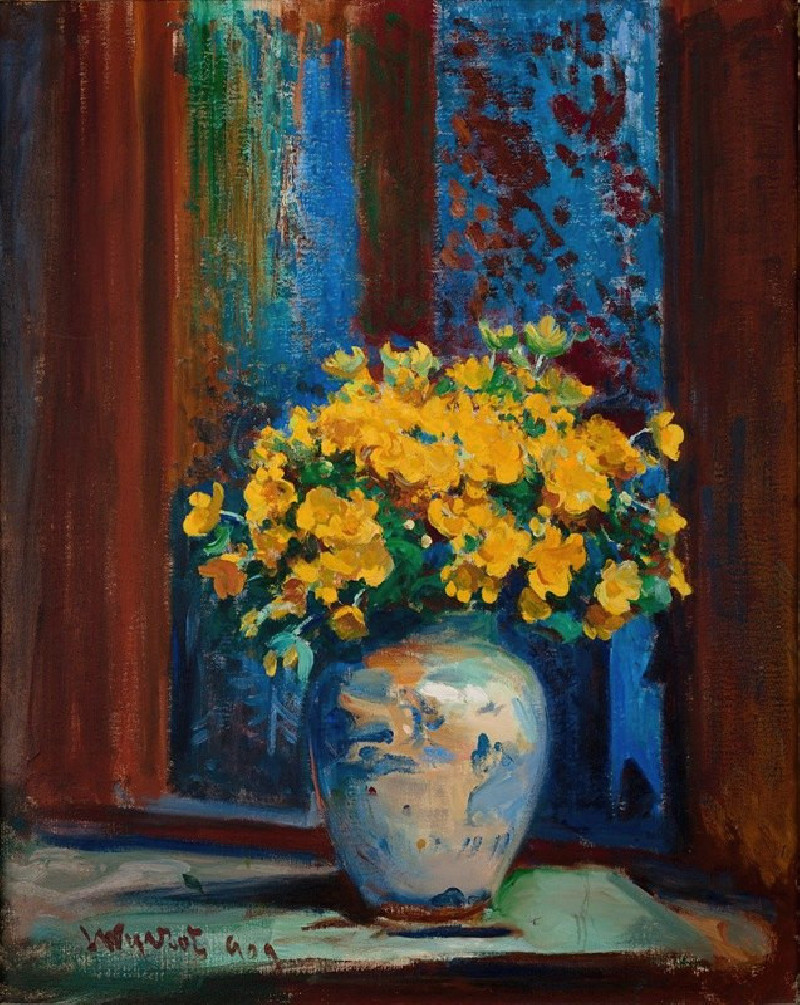Annunciation (1907)
Technique: Giclée quality print
Recommended by our customers
More about this artwork
The painting "Annunciation" by Maurice Denis, completed in 1907, captures a profound and spiritual moment within a serene and lush garden setting. This work portrays the biblical scene of the Annunciation, where the Angel Gabriel announces to the Virgin Mary that she will bear the son of God, Jesus Christ. However, Denis offers a unique interpretation by immersing this divine encounter in a vivid natural landscape, rather than in a traditional indoor setting.The orientation of the painting leads the viewer's eye down a central garden path, bordered by rows of tall, slender cypress trees and a lush canopy of intertwined branches and leaves forming a natural vaulted archway. The rich greens and earth tones of the trees contrast beautifully with the vibrant pinks and soft whites of the flowering bushes, creating a sense of depth and vitality.On the left of the path, the Virgin Mary is depicted kneeling with a humble and accepting posture, clad in a flowing cream gown that echoes her purity and grace. Opposite her, the Angel Gabriel approaches, rendered with soft, ethereal brush strokes in pale yellows and pinks, symbolizing his heavenly presence. His gentle approach and the outstretched wings convey a sense of calm and benevolence.Maurice Denis's "Annunciation" intertwines the spiritual with the natural, reflecting the artist's knack for blending religious themes with contemporary Symbolist style. The painting invites viewers to experience this celestial announcement not just as a sacred event, but as a moment of divine beauty integrated into the rhythm of the natural world, suggesting the omnipresence of the divine in everyday life.
Delivery
Returns
French painter Maurice Denis (1870-1943) was one of the leading artists during the transition from Impressionism to Modern Art. He was heavily influenced by the Symbolist works of Paul Gauguin. Denis would paint with rich colors and experiment with warm and cool colors. Some of his theories have become the foundations of cubism, fauvism, and abstract art.

